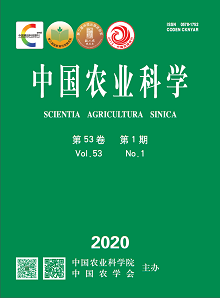【Objective】The aim of this study was to identify SNP loci and candidate genes significantly correlated with cucumber hypocotyl length trait, which could provide a theoretical basis for revealing the genetic basis and molecular mechanism of cucumber hypocotyl length trait, and lay a foundation for marker-assisted selection breeding of cucumber hypocotyl length trait.【Method】The natural population including 95 cucumber germplasm was employed in this study, and seedlings were grown in the plastic house in Nankou Experimental Field of Chinese Academy of Agricultural Sciences in spring 2016, spring 2017, autumn 2017 and spring 2018, respectively. The hypocotyl length was measured at the two true leaves stage. Structure 2.3.4 software was used to analyze the population structure, and Haploview software was used to analyze the attenuation of linkage imbalance. Then, the whole genome association analysis of hypocotyl length was carried out based on the optimal model. The important candidate genes related to hypocotyl length were predicted according to the LD interval sequence of the associated SNP loci, and the expression pattern of candidate genes were performed by fluorescence quantitative PCR. 【Result】A total of 8 loci, including Hl1.1, Hl1.2, Hl2.1, Hl3.1, Hl3.2, Hl4.1, Hl5.1 and Hl6.1, were detected on Chr. 1, 2, 3, 4 and 5, respectively. Five of them, Hl2.1, Hl3.1, Hl3.2, Hl5.1 and Hl6.1, were detected repeatedly in two or more different environments. By analyzing the LD interval sequences of the associated SNP loci, eight candidate genes, Csa1G074930, Csa1G475980, Csa2G381650, Csa3G141820, Csa4G051570, Csa3G627150, Csa5G174640 and Csa6G362970, were predicted, which were related to cucumber hypocotyl length. Some of the candidate genes involved in regulating plant photomorphogenesis, ubiquitination, and hormone signaling pathway. And some of them were downstream genes regulating cell growth, development and cell size, thus they directly regulated hypocotyl length. Thus, the varied distribution of above genes in different cucumber materials resulted in the different hypocotyl length cucumber germplasm. The organic distribution of polygenes in different cucumber materials formed cucumber germline with different Hypocotyl length. Gene expression analysis showed that Csa1G074930, Csa1G475980, Csa2G381650, Csa4G051570 and Csa5G174640 were highly expressed in short hypocotyl materials and Csa3G141820 and Csa3G627150 were highly expressed in long hypocotyl materials.【Conclusion】Eight SNP loci linked with hypocotyl length, Hl1.1, Hl1.2, Hl2.1, Hl3.1, Hl3.2, Hl4.1, Hl5.1 and Hl6.1, were detected in this study. Eight candidate genes regulating hypocotyl length were predicted, including Csa1G074930, Csa1G475980, Csa2G381650, Csa3G141820, Csa4G051570, Csa3G627150, Csa5G174640 and Csa6G362970.









